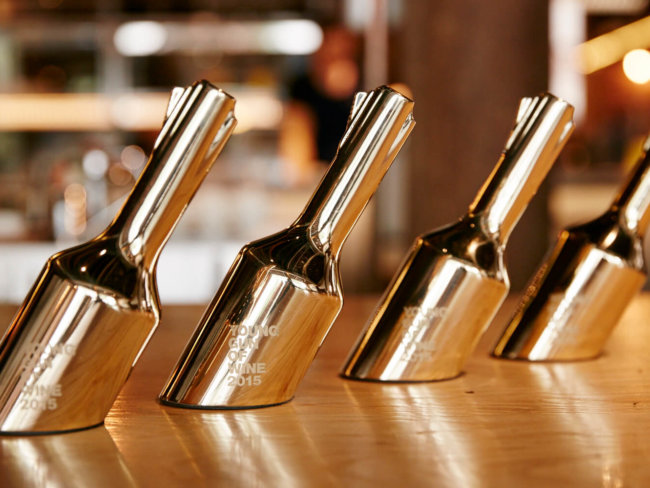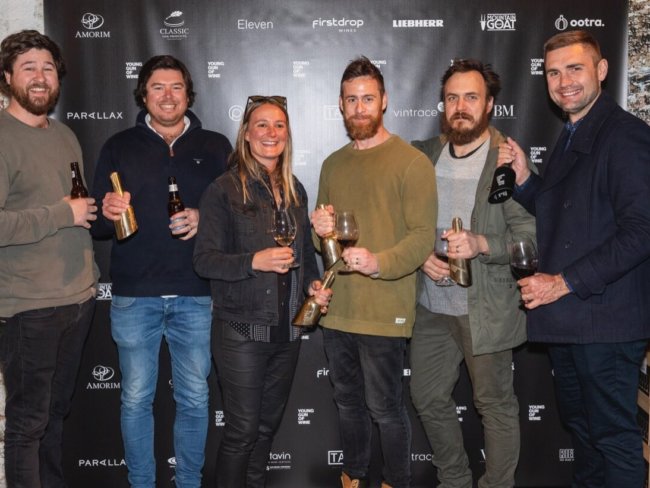At some point everyone has felt lost, overwhelmed or embarrassed trying to order wine at a restaurant or wine bar. Follow these simple tips, compiled with help from five wine hospitality veterans, and it never has to happen again.
Going out for dinner is supposed to be a fun experience. With someone else cooking the food, pouring the drinks and curating the playlist, diners can relax and enjoy each other’s company. But even if restaurants have dialled back the airs and graces over the past few decades and focused on making their guests feel more at ease, wine lists remain a point of anxiety.
People are embarrassed by their lack of knowledge, embarrassed by their palate, embarrassed by their budget, worried about choosing the “wrong” wine for the table and so on. And no matter how friendly and helpful the sommelier may be, their shoulder-level lurking often ends up compounding, not relieving, this unease.
It’s happened to all of us at some point on our wine-drinking journey. Regardless of your knowledge or experience, it needn’t continue, though. These simple tips, compiled with help from five wine hospitality veterans, will see you through any situation with confidence.
Ask for help
This point may seem obvious, but it’s not always heeded or used to its full potential. Sommeliers are employed specifically because wine lists are hard to navigate. It’s their job to help, and they’re always going to know more about the list (and wine generally) than you do. This should be cause for comfort, not disquiet. Do you worry that your doctor knows more about medicine than you?
“I don’t think there’s anything wrong with saying, ‘I know absolutely nothing about this,’” says Shanteh Wong, Head Sommelier at Sydney restaurant Quay. “If I walked into a bank and I was about to get a mortgage or something I hadn’t done before, I would say, ‘I have no idea where to start with this, all the language is so unfamiliar.’”
![]()
Shanteh Wong encourages drinkers to embrace the expertise of a restaurant’s wine staff.
If a sommelier can’t speak in terms that make sense to you, that’s a failing on their part, not yours.
“We train all our guys to only speak in plain language,” says Matt Swieboda, co-owner of Sydney’s Ragazzi, Dear Sainte Éloise and Love, Tilly Devine. “If you’re visiting a place that’s worth visiting, I would hope that the servers there would be able to speak to you in language that you’ll be able to understand.”
And if you’re not connecting with your server, it’s perfectly okay to engage the next staff member who wanders past the table.
“Speak to the sommelier, speak to the waiter, speak to the manager,” says Leanne Altmann, beverage director at Andrew McConnell’s Trader House group in Melbourne (Gimlet, Cutler & Co, Supernormal, Marion, Cumulus Inc). “Find that person who’s really excited about the wine list and wants to share something with you.
“[But] make sure that they’re advocating for you and looking for the sort of thing that you’re looking for, not just what they’re excited about.”
Be frank
Sommeliers can only help you as much as you let them – which means being open and honest. Tell them if there’s something you don’t understand or don’t like. Even if you’re comfortable with wine and wine jargon, budget can often be an impediment here.
“[It’s] the embarrassment of how to communicate price without showing your hand,” Altmann says.
This comes up most often when people are dining with clients or a group they’re not especially close with. Even in these situations, there’s still a way forward.
“It’s really great when people just hover their hand near the price or say, ‘I was thinking something like this’ and point to the wine they were thinking of,” Altmann says. “Then I can aim appropriately.”
And if you’re comfortable with it and the situation allows, it’s helpful to be more direct about budget, reckons Eleanor Cappa, co-owner of Brisbane wine bar Maeve.
“Don’t be afraid to ask about price point,” she says. “I think that’s one that really gets a lot of customers. They feel a bit shy to ask for what they want in terms of price. But I don’t think there’s as much judgement as people think.”
![]()
Eleanor Cappa says there’s no reason to be afraid to talk about price point.
Apart from overcoming the price taboo, honesty on both sides is generally just important for managing expectations and avoiding disappointment.
“If you ask the sommelier for something quirky and interesting, you ha
e to be ready to get something quirky and interesting,” says Pierre Stock, Sommelier of Melbourne institution France-Soir. “Often people say, ‘Oh yeah, whatever, do this, that’s great.’ And then when the wine arrives, they’re quite disappointed because it’s not what they asked for or thought they asked for.”
Give examples
Sommeliers need something to work with. Anything. In many ways, choosing a wine is a process of elimination. There’s a literal world of possibilities out there. The more you can narrow down the choices using concrete examples, the more likely you are to get a recommendation that suits your taste.
“If you can give an example of something you enjoy, the sommelier can take cues from that wine or those varieties and help you understand what your palate is,” Wong says.
“I’ve had people show me images of wine on their phone, tell me brands that they’ve enjoyed, regions that they enjoy,” Altmann says. “Even if they know the Barossa shiraz that they like to drink from Dan Murphy’s, that helps me select a wine for them – now it might not be Barossa shiraz, but it might be that style.”
“It can be as simple as, ‘I know that in the past I’ve enjoyed Yarra Valley pinot noir. Do you have any good Yarra Valley pinot noir that you’d recommend, or something similar to that?’” Swieboda says.
If you’re dining with a large group, or with people you don’t drink with regularly, it’s a good idea to get an overview of the table’s preferences and pass this on too.
“If someone says, ‘She likes to drink chardonnay and I prefer to drink riesling, what do you recommend?’ That’s certainly helpful,” Altmann says. “My next question would be, ‘What is it you like about riesling?’ or ‘What is it you like about chardonnay?’ to see if I can find something in the middle or something appropriate for both parties.”
Use simple language
As the examples above illustrate, you don’t need wine jargon to communicate your preferences. In fact, sommeliers would probably prefer you don’t use it. If nothing else, speaking in everyday English reduces the chance of embarrassing yourself.
When Stock is drinking elsewhere, for example, he likes to try wines he’s never tasted before. He tends to say something like, “I want something quite clean, maybe slightly natural but not mousy, not too old but fresh, that I can actually drink without eating, and my budget is 100 bucks.”
“If you speak in plain language and don’t try to be more articulate than you really are, I don’t think you’ve really got an opportunity to make a fool of yourself, Swieboda says. “Be confident with your server, but listen to them as well. It’s probably going to work out better for everybody if people don’t try to feel that they know too much.”
![]()
Matt Swieboda shuns technical terms for plain language. Photo by Trent van der Jagt.
Cappa agrees with this last part. In this arena, the old adage of “fake it till you make it” is terrible advice.
“People that know nothing, they’re wonderful and really easy to please,” she says. “People that know a lot, fantastic, you can have a different kind of conversation that’s engaging for both parties. But the people who don’t know a lot but think they do, they’re the trickiest to talk to. You’re not talking the same language.”
“As a sommelier, do I need to tell the client the wine has violet notes and leather and coffee? No, I don’t think so,” Stock says. “Those things are quite jargon-y and it’s good to look at the tasting notes if you want to match wines and things like that. But the customer’s not looking for wine that’s got violet notes or leather. They’re looking for the big line. If it’s light, medium or fuller … if it’s quite woody or heavy or young. The big line.”
Develop some shortcuts
While there’s rarely a need to get technical when ordering wine, knowing some basic descriptors is helpful. In terms of time and effort, this is a small investment that can pay big dividends.
“It doesn’t hurt to expand your wine vocabulary to be able to give more detail, but really simple things – like whether it’s light-, medium- or full-bodied, or low to high acidity, or low to high structure – will begin that conversation,” Swieboda says. “Every time you enjoy a bottle of wine when you’re out, write it down or take a photo of the label. And when you get home, jump online and see how other people described it. That’s the way I learnt about wine.”
If you know someone well-versed in wine, you can also lean on them and ask them to describe your favourite wines using this kind of language. “Find a few tag words and take them with you to the restaurant,” Cappa says. “Or even use the sommelier or waiter at the time. You can say, ‘I loved this wine and want to be able to order things like it in the future. Can you give me three or four words that I can tell the next person I like in a wine?’”
If all else fails, look to regionality
“Pick the second-cheapest bottle on the list” is an old and oft-repeated bit of advice. While that may have been useful at some point in the past, it’s not anymore. Wine is more diverse and idiosyncratic than ever, and picking a cheap bottle at random is likely to backfire. Restaurants are also a chance to stretch yourself and try something that might be impossible to get at a bottle shop – which often entails paying a bit extra.
“I’m always really proud of the wines we have at the cheapest price points. The other buyers and I work really hard to find inexpensive wines that are sound and represent good value,” Altmann says. “But there’s always going to be more story, more experience, more complexity and certainly more sustainability at a higher price point.
![]()
Leanne Altmann suggests there are a number of ways to talk with a sommelier to find a wine to your taste, from asking questions, to even showing photos on your phone of other bottles you like. Photo by James Morgan.
“If I really didn’t know anything and there’s no one to ask,” she says, “I would look to the regionality – for a region and a variety that is known for being planted there; known to be successful in that region.”
Almost every wine-drinker knows the Barossa’s reputation for shiraz, for example. There are many other examples of this, such as Margaret River cabernet sauvignon and Mornington Peninsula chardonnay – all just a quick Google search away when you’re reading the list (e.g. “what is McLaren Vale known for”).
With all this in mind, there’s absolutely no reason to feel lost, embarrassed or intimated when you’re out ordering and drinking wine. It’s supposed to be a fun experience, remember? No one expects you to know everything. Indeed, not even the pros know everything… We’re all on a journey of discovery in wine. So just relax and take it as it comes.









